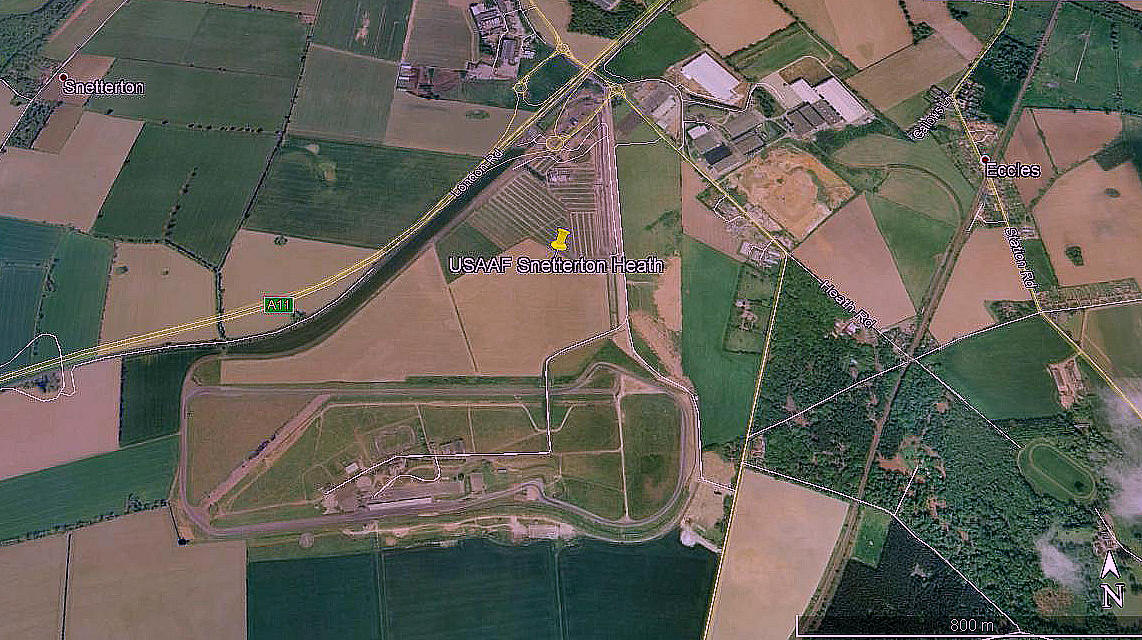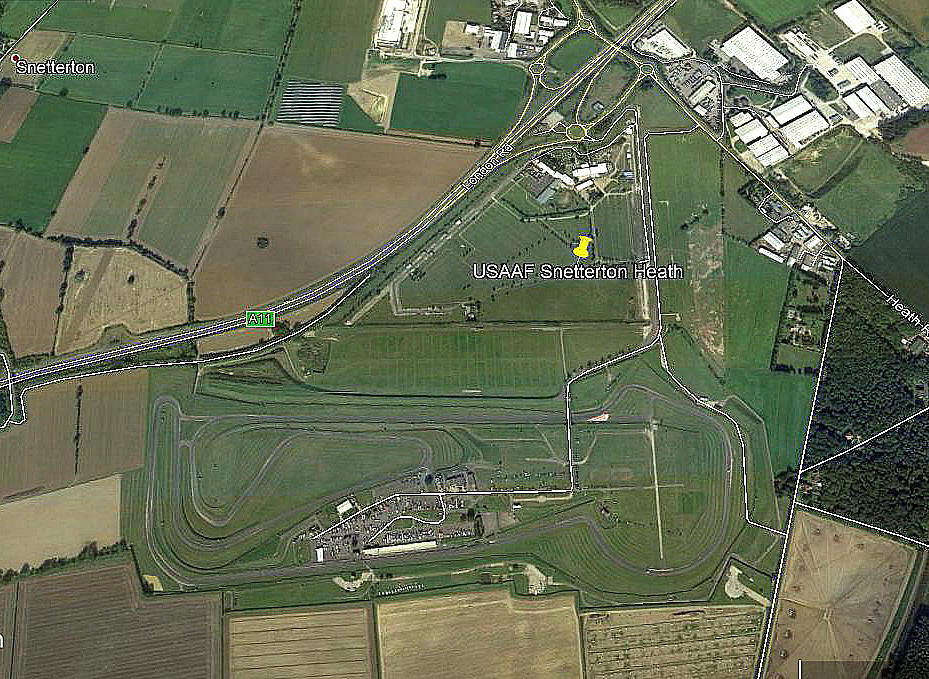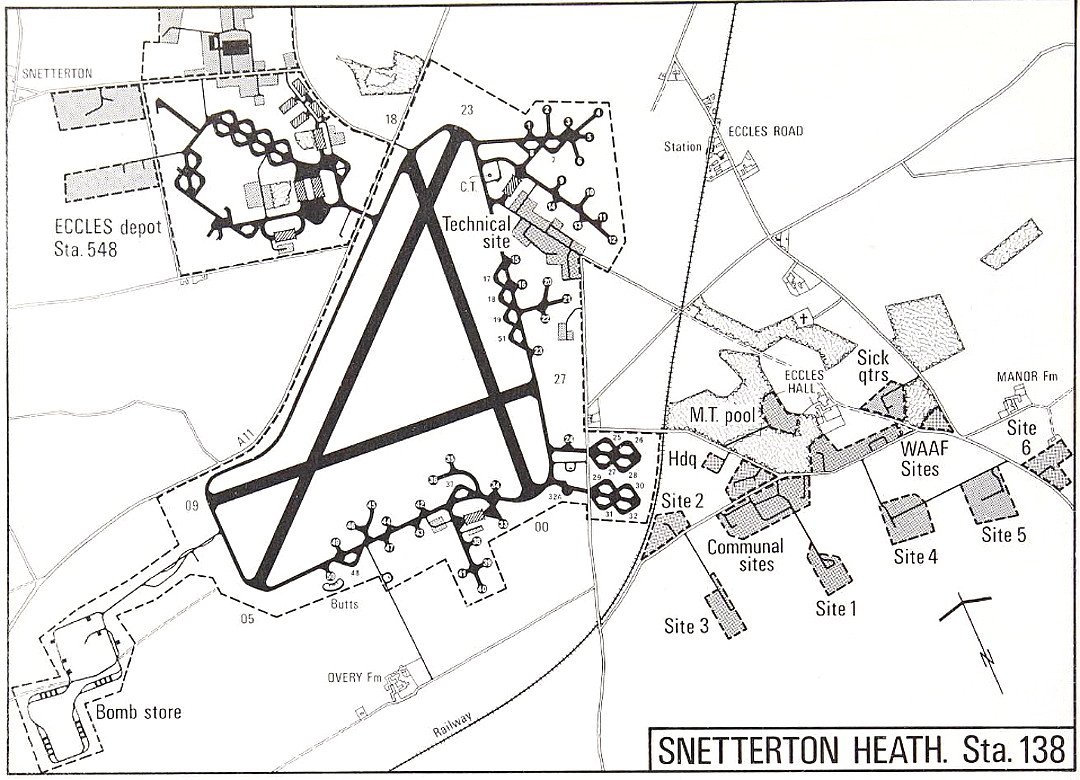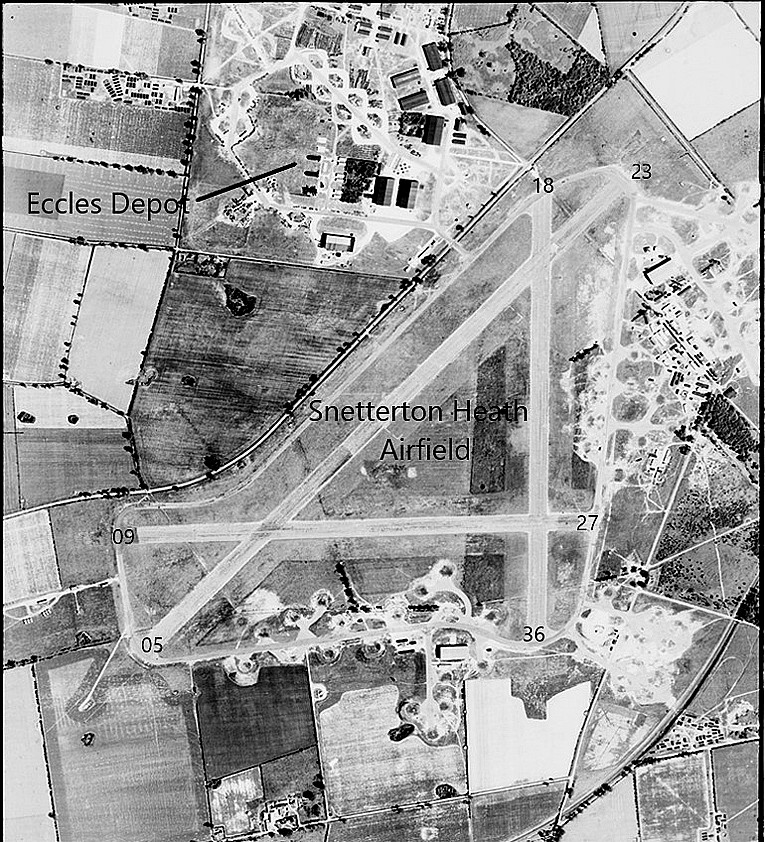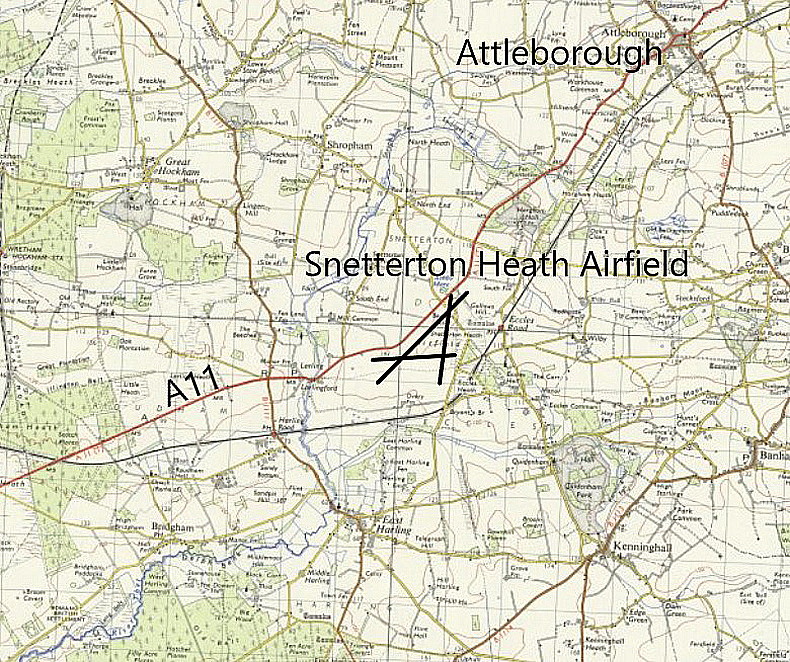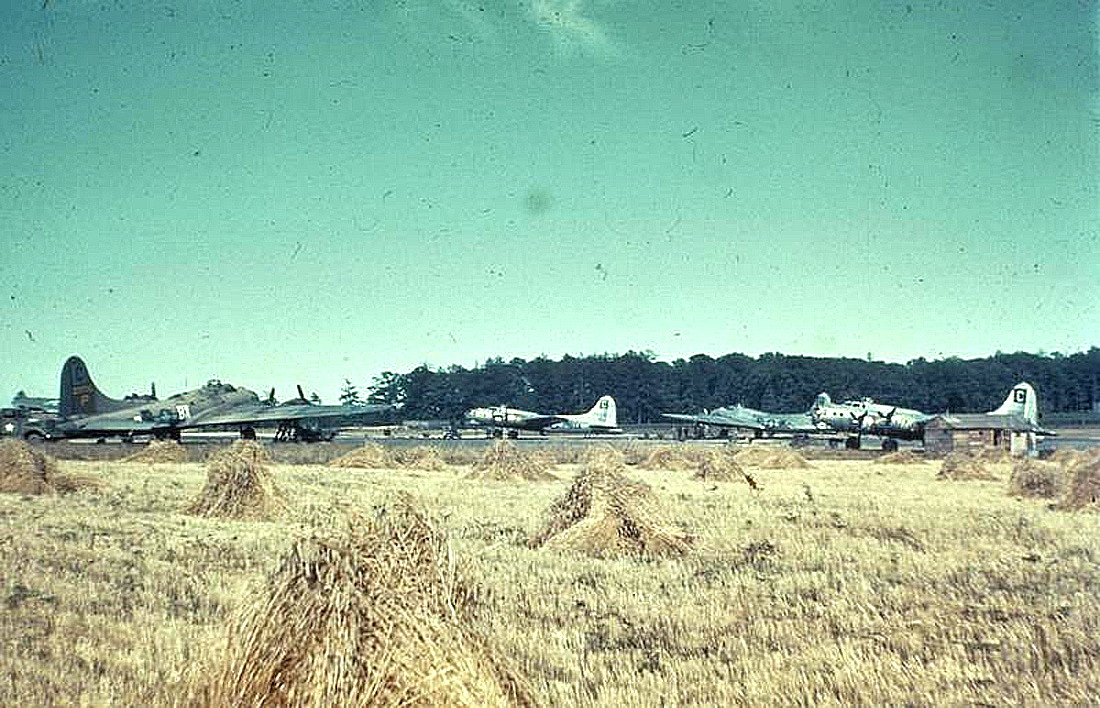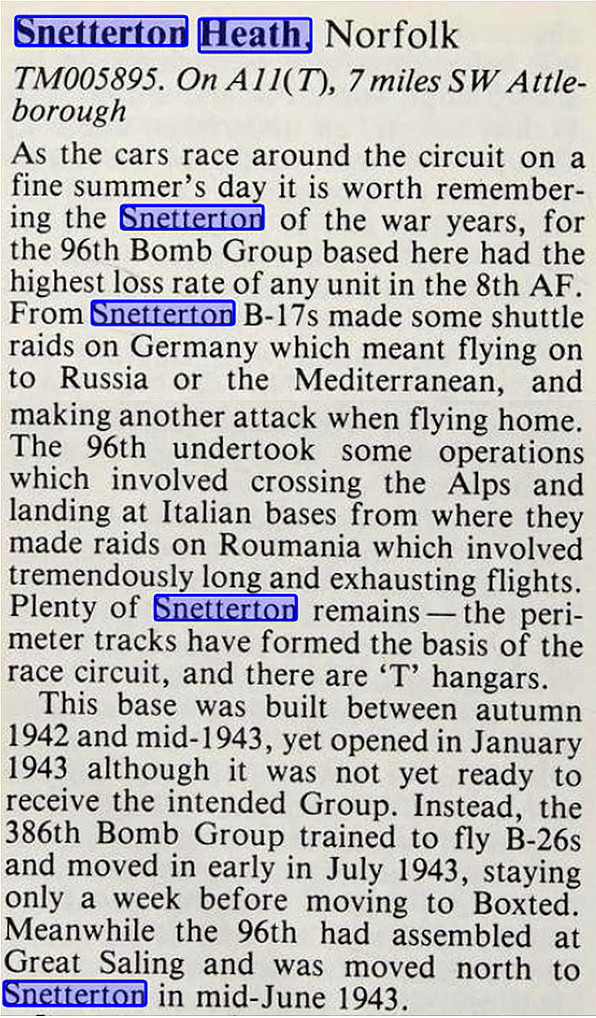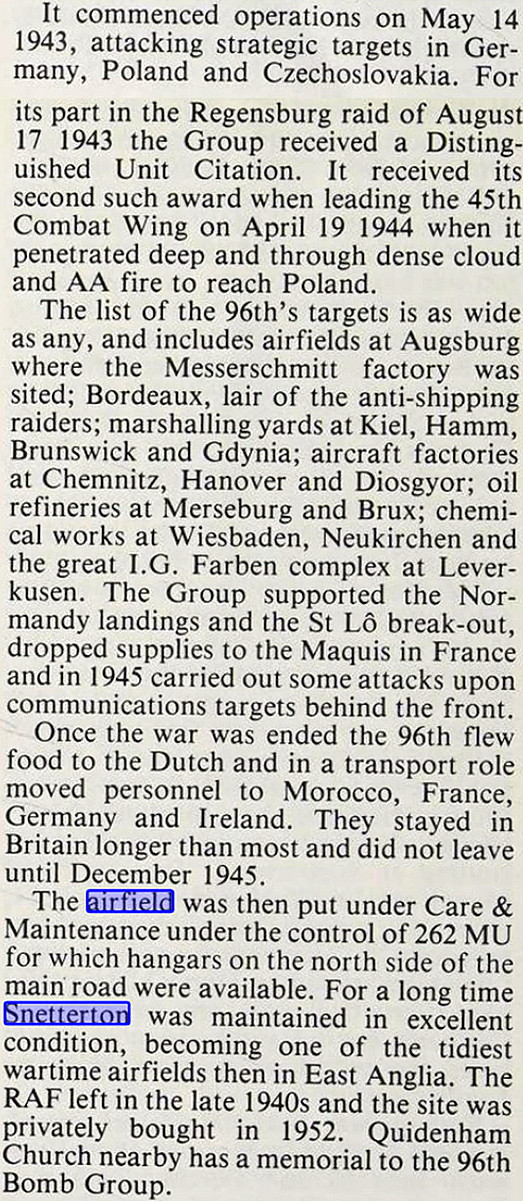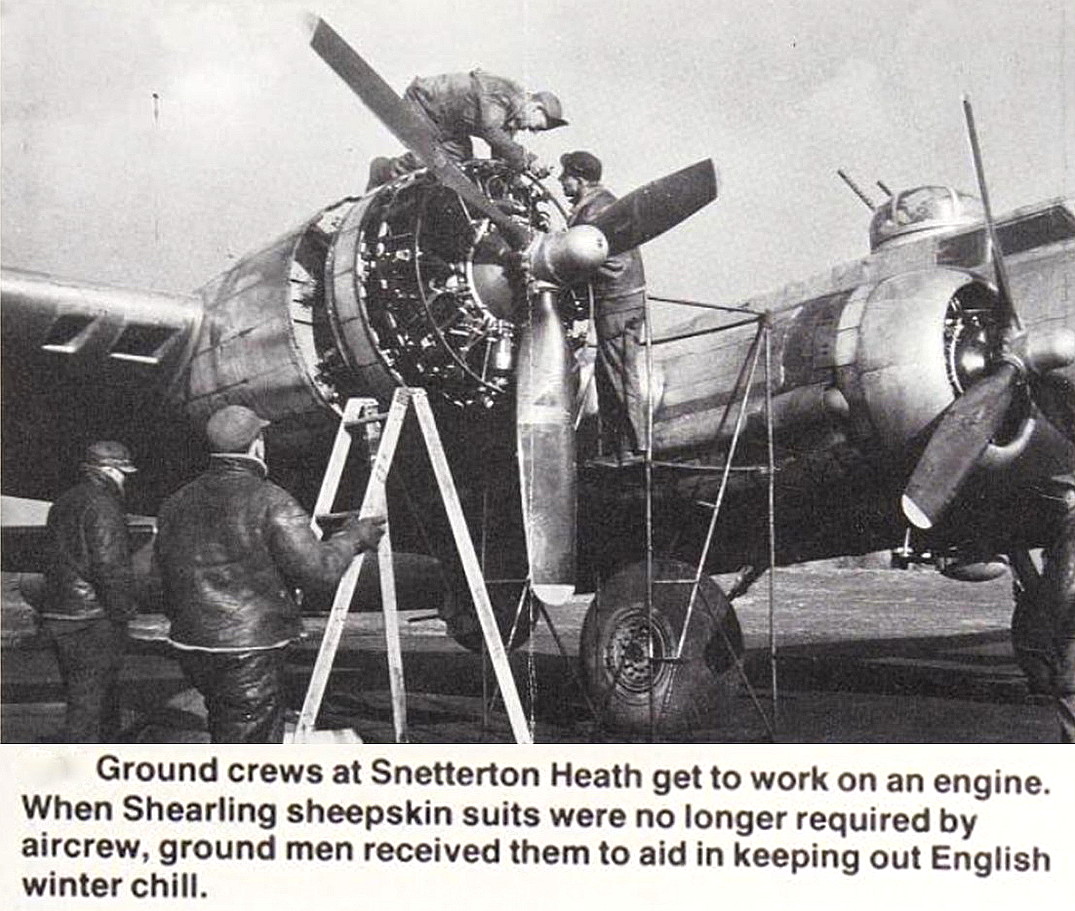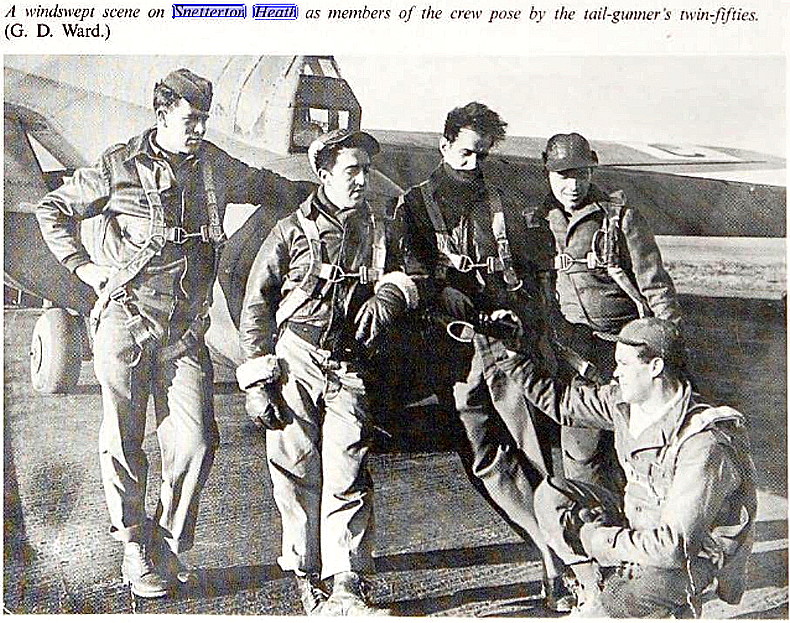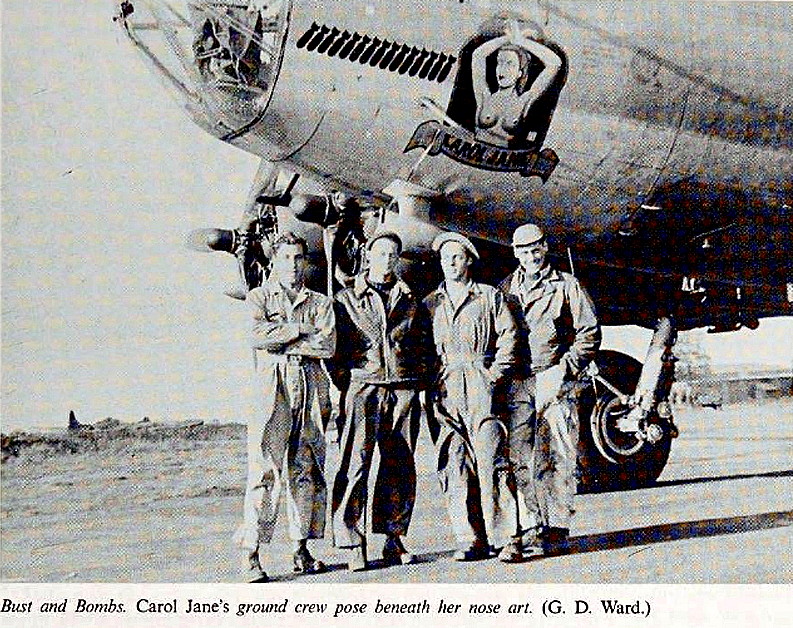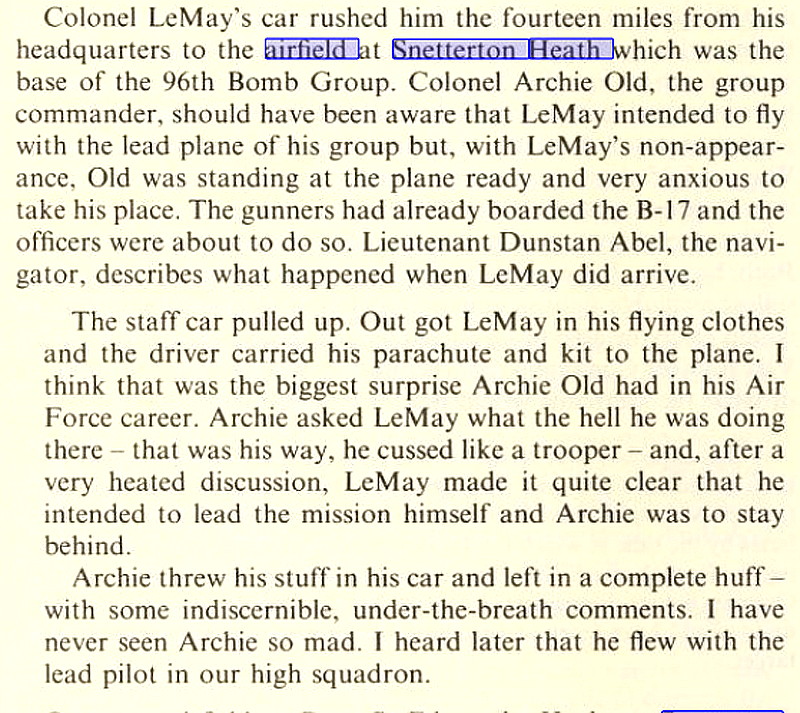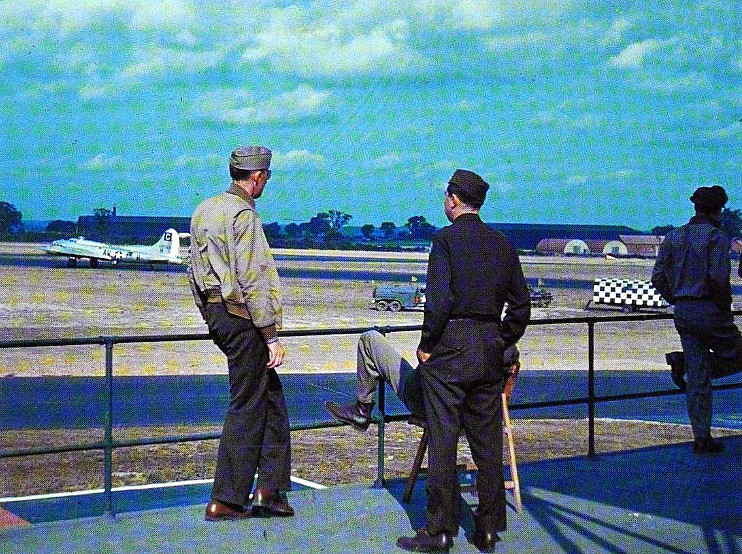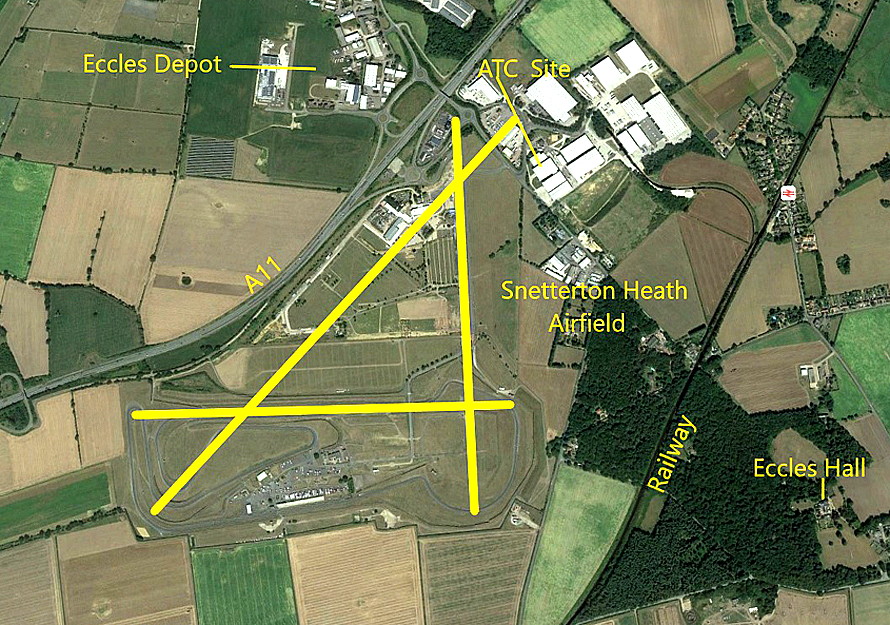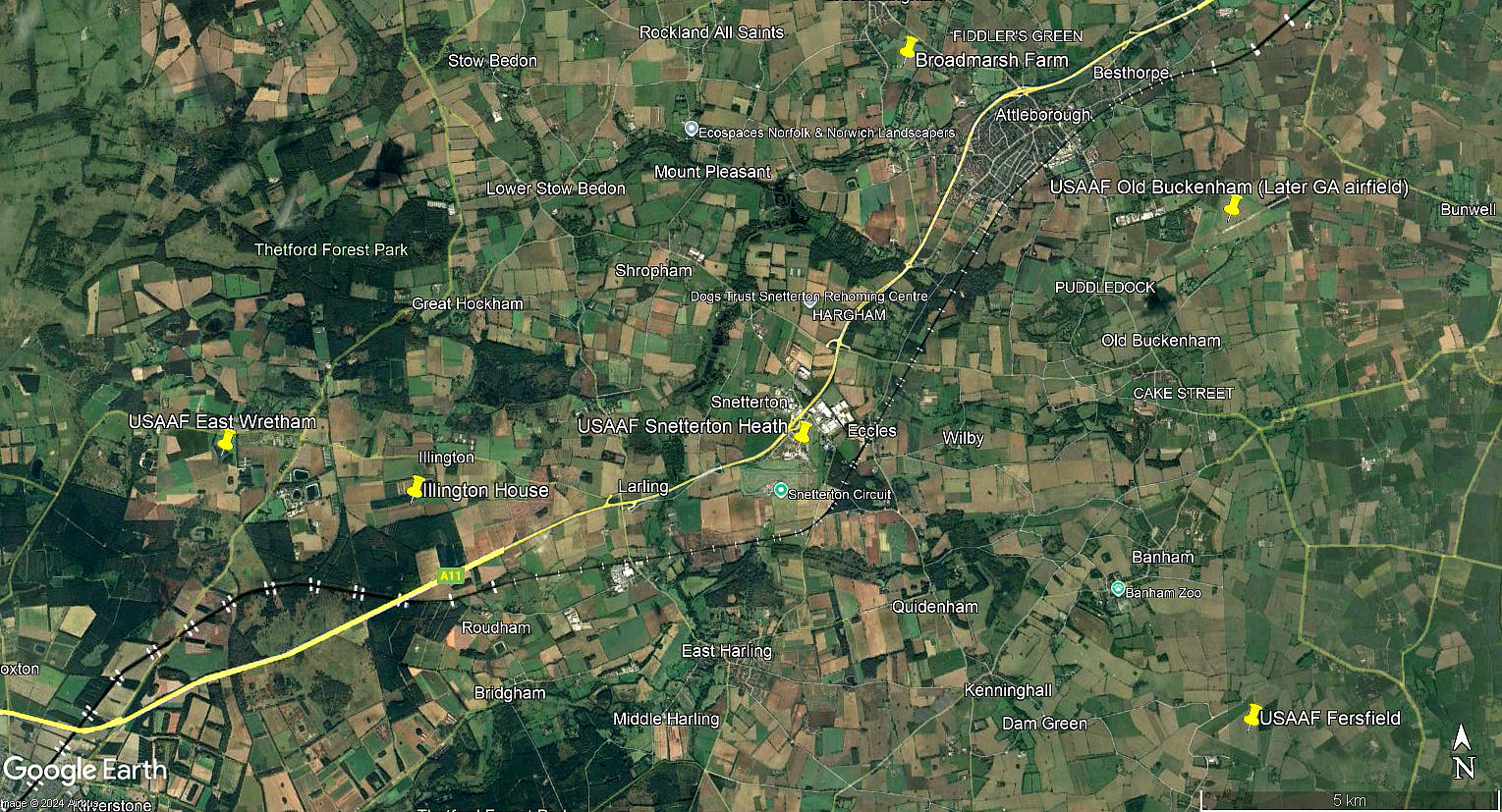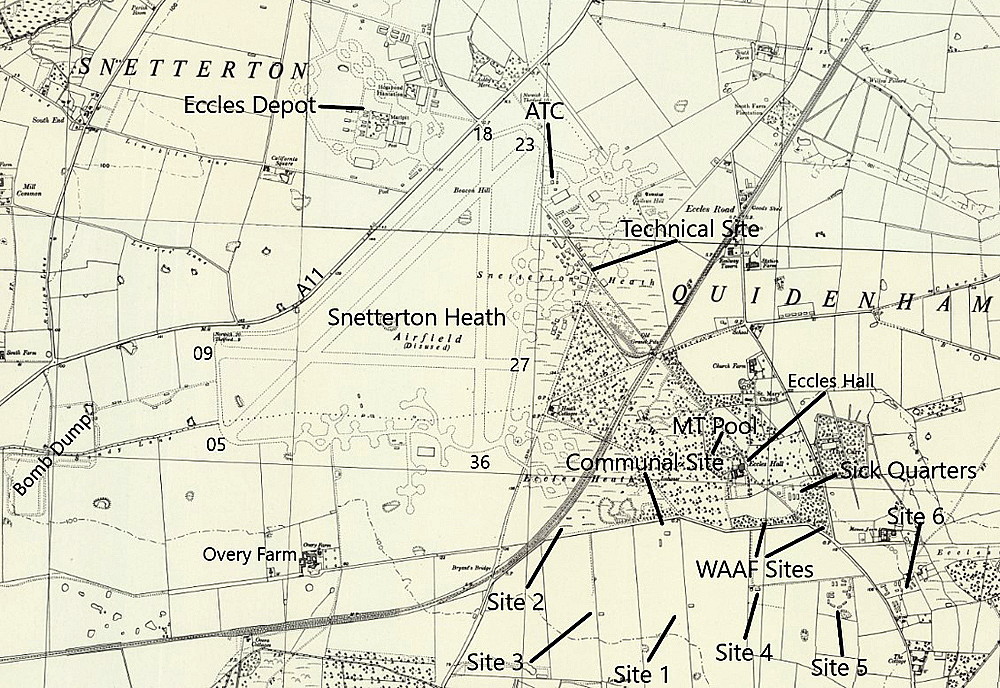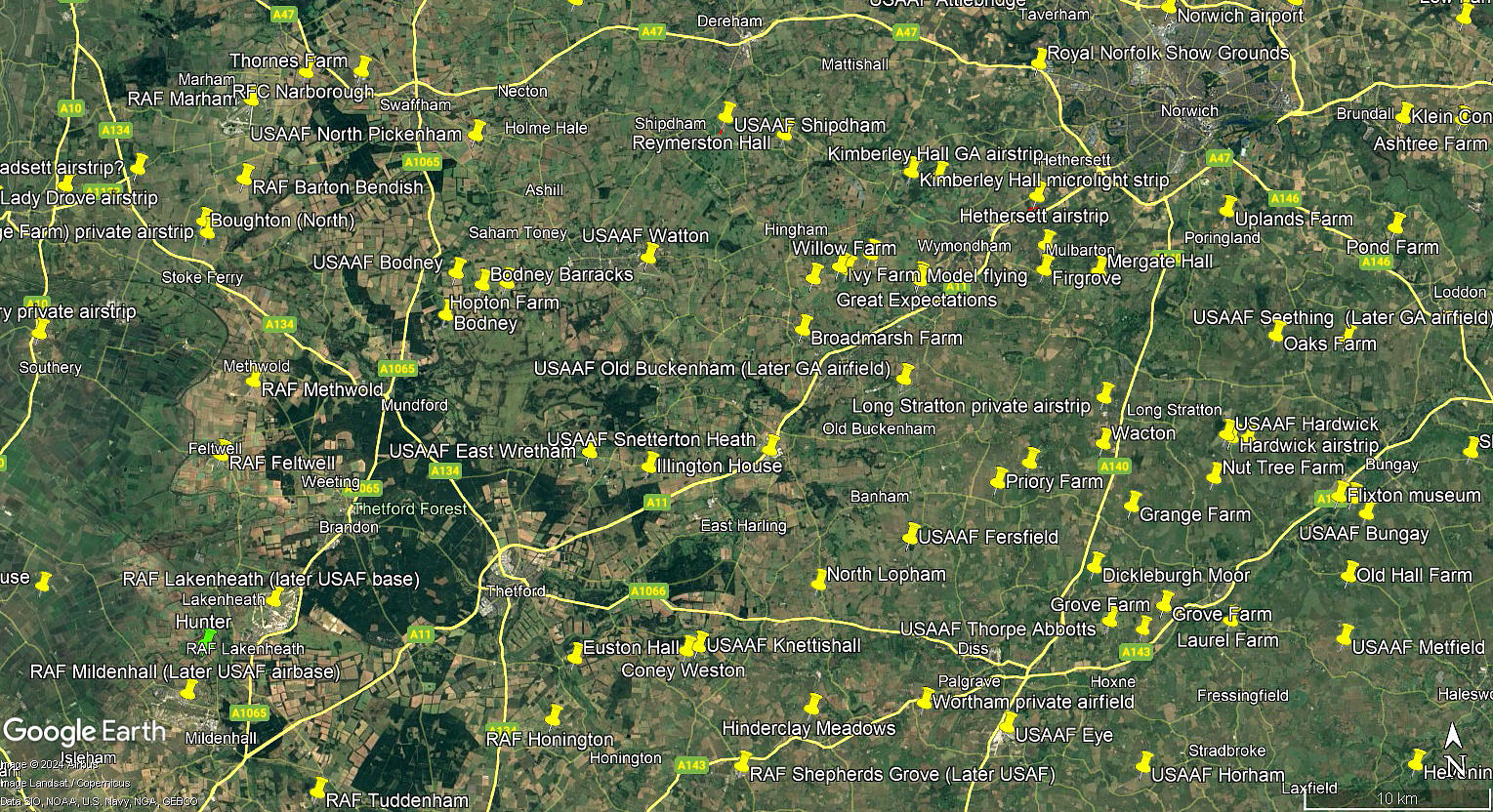Snetterton Heath
SNETTERTON HEATH: Military aerodrome later race track with civil private airfield
Note: Both these pictures were obtained from Google Earth ©
In both these of these pictures I cannot see any positive evidence of the runway once used by fixed-wing aircraft. Although I suspect it was parallel to the E/W straight on the northern edge of the racetrack?
Military user: WW2: Eighth Air Force 3rd Bomb Division 45th Bombardment Wing
552, 553, 554 & 555 Sqdns (Martin B-26B/C Marauder)
Note: Arriving on the 3rd June 1943 it appears they quickly moved on the 10th June to BOXTED. The 96th arriving from ANDREWSFIELD on the 12th June 1943.
96th Bomb Group 45th Combat Bombardment Wing - later 45th Air Division
337, 338, 339 & 413 Sqdns (Boeing B-17 Fortresses)
My note: Huge military establishments always seem to consider it a neccessity to have an administration, far exceeding those on the front line, to constantly change the planning, usually making to my simple mind no sense at all in terms of logistics. When I would think that streamlining such matters in a major war would be a priority?
Civil activities: In more recent years GA aircraft can visit with permission for race meetings
Location: S of A11, W of Eccles Road & E of Larling villages, 3.5nm SW of Attleborough
Period of operation: Military: 1943 to 1948 Civil: ?
Runways: WW2: 05/23 1829x46 hard 18/36 1280x46 hard
09/27 1280x46 hard
A MICHAEL T HOLDER GALLERY
We have Mike Holder, a great friend of this 'Guide', to thank for researching what might be available to illustrate this location, plus providing additional information and maps etc.
Note: The picture of the B-17s, 338th Bomb Squadron, 96th Bomb Group dispersed on the south side was obtained from the American Air Museum.
The article in two parts is from Action Stations by Michael J F Bowyer.
The two pictures, Ground crew One and crew of 'Carol Jane' are from Bomber Stories by Ian McLachlan and Russell I Zorn.
The Ground crew Two picture is from Mighty Eighth War Manual by Roger A Freeman.
The excerpt is from Regensburg Mission 17 August 1943 by Martin Middlebrook. The view from tower is from Bombers of WWII by Jeffrey Ethell.
The local area and area views are from my Google Earth © derived database.
NOTES:
As the years go by I get ever more interested in comparisons for aircraft performance, especially in WW2, when such considerations really were critical for operations. It is a subject of considerable complexity, of course, but it does seem a general idea can be obtained. Basically the three main RAF heavy bombers, (Stirling, Halifax and Lancaster), could carry twice the bomb load, and a smaller crew, compared to their main USAAF types, (B-17 Fortress and B-24 Liberator). For a rough idea the basic figures appear to be:
Short Stirling: 14,000lbs (6350kg) for 500 miles. Crew of 7
HandleyPage Halifax: 13,000lbs (5896kg) for 1,000 miles. Crew of 7
Avro Lancaster: 14,000lbs (6350kg) for 1600 miles. Crew 7
I cannot find similar range figures for the Fortress and Liberator, but as a general idea for 'short range' missions, it seems:
Boeing B-17 Fortress: 8,000lbs (3628kg). Crew 10
Consolidated B-24 Liberator: 8,000lbs (3628kg). Crew 10
It therefore appears quite apparent that the USAAF, once they had belatedly entered the war against Nazi Germany in Europe, were quite content to operate these two bomber types, with a high attrition rate, and with larger crews, to drop around half the weight of bombs compared to the RAF. Mind you, this said, excluding dropping nuclear bombs of course, with only two early examples on Japan, bombing has never won a war by itself. The American certainly learnt that lesson in Vietnam
JUST A SMALL NOTE: It would appear that in WW2 War Department records state the aerodrome was 6 miles SW of Attleborough. It is not uncommon the find many errors in official records.
We'd love to hear from you, so please scroll down to leave a comment!
Leave a comment ...
Copyright (c) UK Airfield Guide















